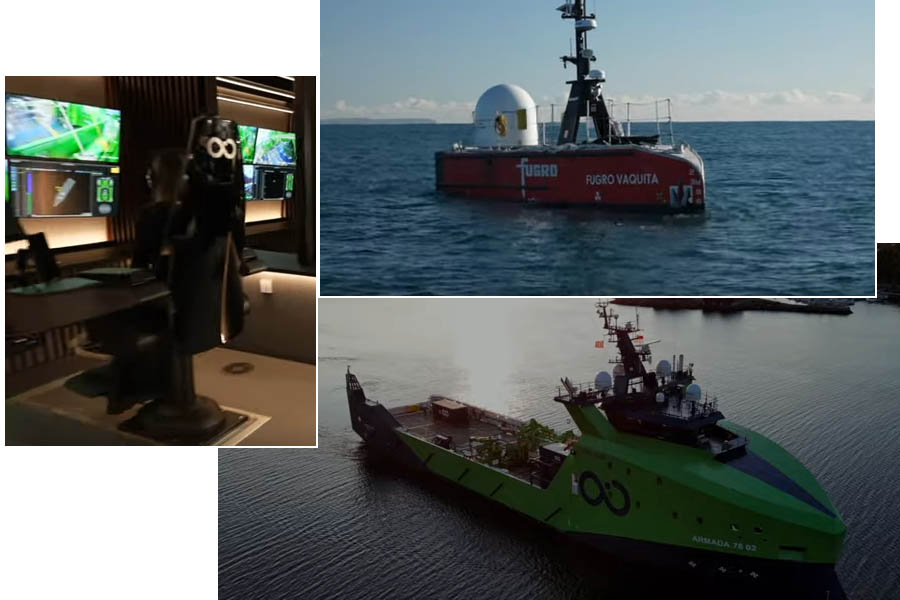
In the vast expanse of the world's oceans, a silent revolution is underway. It's not just about technological advancements but a fundamental shift in how we perceive and operate ships. The emergence of large "robot ships" is not just a fancy idea from science fiction; it's a tangible reality reshaping the maritime industry. These vessels, controlled remotely with minimal crew onboard, are poised to revolutionize shipping as we know it.
Imagine a ship that requires only a handful of people to operate, with the ability to be controlled from any corner of the globe. This isn't a distant dream but the present reality. Companies like Ocean Infinity are spearheading this revolution, building a fleet of technologically advanced vessels designed to operate with unprecedented efficiency.
These ships, equipped with state-of-the-art sensors and communication systems, redefine the traditional concept of maritime operations. With fewer crew members, they are smaller in size, resulting in reduced fuel consumption and a significantly lower carbon footprint. Moreover, advancements in autonomy, robotics, and artificial intelligence have paved the way for a new era of maritime exploration and commerce.
One such vessel, currently undergoing testing in Norway, exemplifies the epitome of maritime innovation. This 78-meter-long ship, designed for tasks like offshore wind farm surveys and underwater infrastructure inspections, operates with just 16 crew members instead of the typical 40 or 50. The control center for these operations is located hundreds of miles away, where skilled personnel manage the ship's functions with precision and expertise.
The control room, with its visually immersive environment, mirrors the onboard experience, allowing operators to monitor and control every aspect of the ship's operations. Tasks that were once performed onboard, such as watchkeeping and launching underwater robots, are now seamlessly executed from the comfort of a futuristic control room.
The implications of this technological leap extend beyond operational efficiency. As more companies adopt similar technologies, there arises a pressing need to revisit international regulations governing maritime safety. Questions about the role of onboard crew versus remote operators and the regulatory framework for autonomous vessels loom large, requiring careful consideration and collaboration among industry stakeholders and regulatory bodies.
However, amidst these challenges lies immense opportunity. The advent of robotic ships represents a paradigm shift in the maritime industry—one that promises greater efficiency, safety, and environmental sustainability. While it may take time for every ship to embrace full automation, the industry is undeniably moving towards a future where technology reigns supreme.
As we witness the dawn of this new era in shipping, one thing is certain: the next wave of maritime innovation has already arrived. With each passing day, robotic ships inch closer to becoming the norm rather than the exception, heralding a future where human ingenuity and technological prowess converge to chart new horizons on the high seas.
Message To The Readers:
Technological Revolution in Shipping: The emergence of large "robot ships" controlled remotely with minimal crew signifies a significant technological advancement in the maritime industry. These vessels, equipped with advanced sensors and communication systems, are redefining traditional maritime operations.
Efficiency and Sustainability: Robotic ships offer enhanced efficiency and sustainability benefits by requiring smaller crews, resulting in reduced fuel consumption and carbon footprint. This shift towards automation aligns with broader efforts to mitigate environmental impact and improve operational efficiency within the shipping sector.
Regulatory Challenges and Considerations: The rise of autonomous vessels presents regulatory challenges regarding maritime safety and the roles of onboard crew versus remote operators. International regulations governing maritime operations may require revisions to accommodate the growing prevalence of robotic ships and ensure safe and compliant maritime practices.
Future Outlook: Despite regulatory hurdles, the adoption of robotic ships represents a transformative shift towards greater efficiency, safety, and sustainability in shipping. As companies continue to invest in autonomous technologies and regulatory frameworks evolve, the maritime industry is poised to embrace a future where automation and human oversight converge to drive innovation on the high seas.
Thank you for reading: globalpostheadline.com | If you want to advertise your Company, Events, Movies, Products, Hotels, Travel Packages Let us know